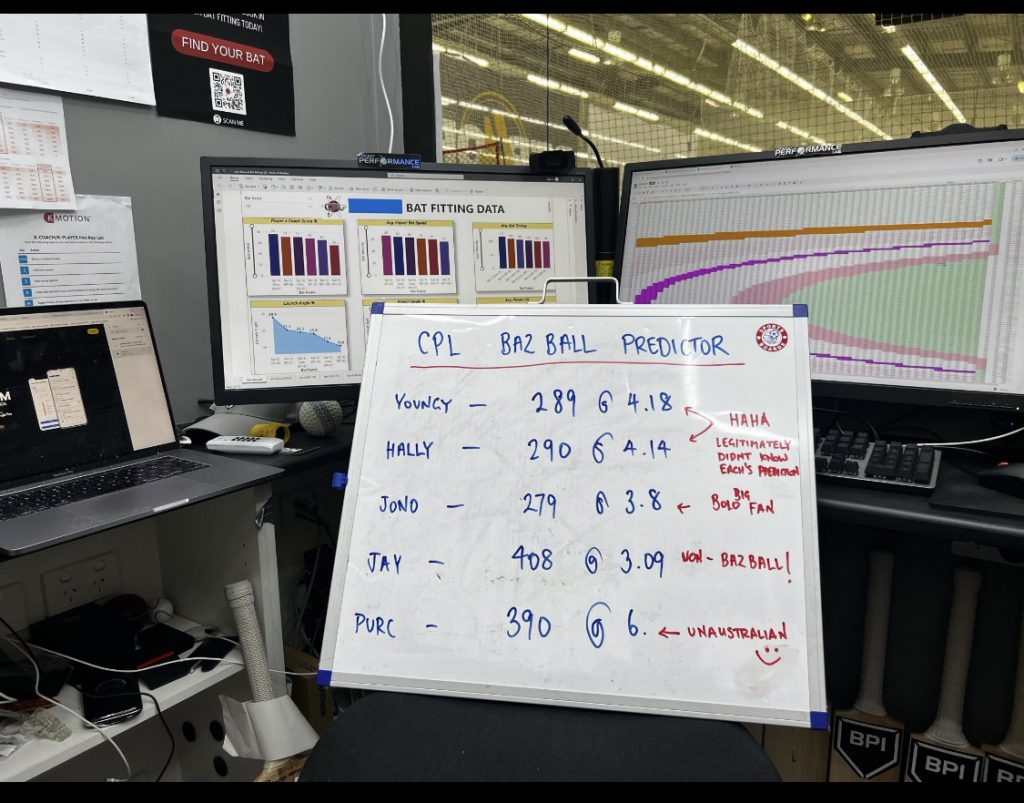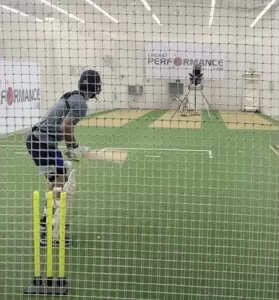There’s always excitement around the start of an Ashes series but this battle for the urn has seen anticipation reach perhaps unprecedented levels.
Most of the interest revolves around Baz (and Ben) Ball and if it will stand up against the best bowling attack in the world.
There is a different question that has been bouncing around Cricket Performance Lab for a few weeks.
Does Bazball mean a change of bats to match the strategy and more importantly does the Aussie bowling attack present challenges not seen in the last 12 months?
Many batters opt for bigger profile and heavier bats when playing T20 cricket.
Power-hitting experts are devotees of increased bat speed and believe hand speed is the secret of power-hitting success.
Our data-driven research paints a different picture and different thinking.
Science objectively shows us that a higher BPI bat has a higher moment of inertia, is more powerful but with less control and requires more physical force to move it and stop it.
A lower BPI bat needs less force to move it and slow it down, creates higher bat speeds, with more control but less power.
Greater bat velocity (speed) doesn’t always equate to higher exit velocity (speed of the ball off the bat) for starters…
Our deep dive into optimal launch angles also suggests that the Australian pace bowlers potentially provide a more challenging point of impact (insertion point) and could force Baz Ballers to play squarer of the wicket in search of boundaries.
While horizontal bat swings are faster, the margin for error is increased due to a smaller achievable point of Impact. (In simple terms, swinging horizontally against hard-length bowling offers a smaller surface area of the bat to find the centre of percussion – “the sweet spot”).
The most high-impact players in short-form cricket combine a number of different elements and skill sets to achieve the desired outcome.
BazBall also relies on a high boundary percentage.
The million-dollar question is can it be executed under sustained pressure of high-quality bowling execution on traditionally seam-friendly wickets? Or will the move the game forward at all costs approach produce bowler error and create higher scoring opportunities? We’ve created a competition within CPL and would love for you to join us.
So our question for all cricket lovers is this….
What will be England’s 1st Innings Total and at what run rate will they score at?
The closest prediction to the Total and Run Rate, we will get a VIP Virtual tour of the Cricket Performance Lab.
Here’s the CPL/YoungGun Team thoughts
Youngy – Founder of CPL/Director of Athlete Performance
289 @ 4.18 runs per over
Hally – Founder of CPL/Master Bat Fitter
290 @ 4.14 runs per over
Jono – CPL/YGC Coaching Programs Manager
279 @ 3.8 runs per over
Jayneel – CPL Data Analyst
408 @ 3.09 runs per over
Tom – CPL/YGC Intern Coach
390 @ 6 runs per over
#theashes #cricket





